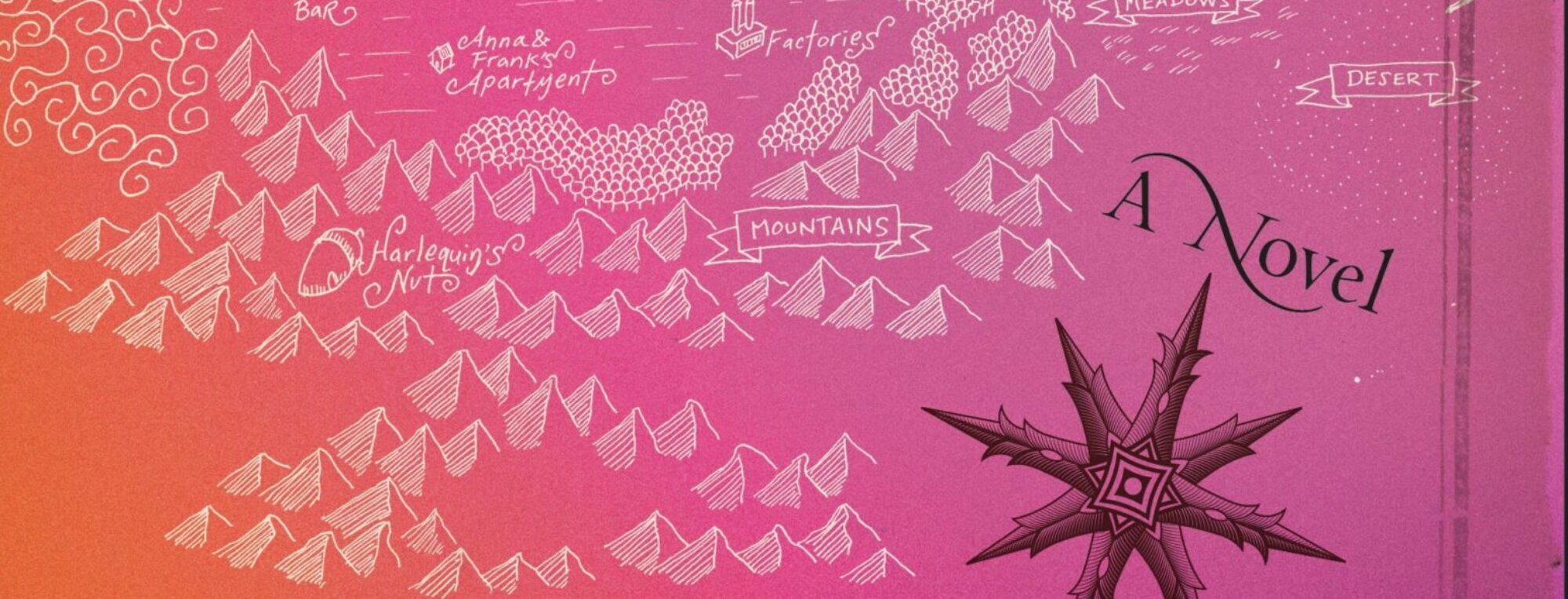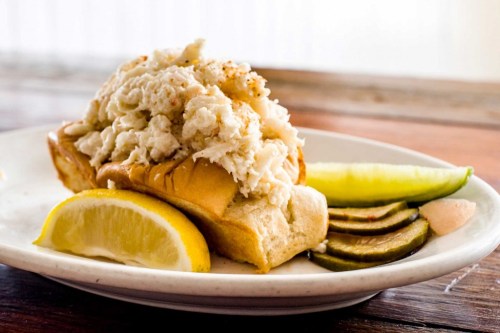
From my new review in in Gay City News: Hugo and Sons, Park Slope, Brooklyn.
The waitress welcomed us as though she had been waiting all her life just to ply us with glasses of nerello mascalese and plates of pasta à la chitarra with tuna, chilies, and mint.
That’s the kind of service I like. When you pay your hard-earned money to a restaurant, you should be treated as though you were making each staffer’s day just by sticking your foot in the door and exciting them for life just by placing your queenly butt in their chairs. Hugo and Sons, a convivial, three-month-old Italian restaurant in Park Slope, offers a much better experience than its delicious but snooty next-door neighbors, Talde and Applewood. The tiny portions and cool welcomes at those eminences should by rights direct diners to this happy, generous new kid on the block.
A lot of the food will make you smile as warmly as the waitstaff do. That chitarra pasta (square-edged, long, spaghetti-like strands made on a traditional, cut-by-hand device) was surprisingly voluptuous, a special one night with unctuous lumps of cooked tuna. Lovers of pearls and diving, come to Brooklyn: I haven’t had cooked tuna this lewd in decades. (American chefs have forgotten how to make anything in between a near-raw sear and dead-and-dry.)
My own pearl girl and I were eating in Hugo’s pizzeria annex, which serves everything on the regular menu except entrées, plus pizzas and specials. The pizza place’s outdoor seating on 11th Street turns out to be Hugo’s most romantic setting, amid abundant plants, Shabby Chic red metal chairs, leafy street trees, and the nearby outdoor diners from Applewood and their dinner plates to gawk at and compare. It was only a South Slope pizzeria, but we seemed to be dining in Paris.
I was in the mood for a girly drink: a prosecco cocktail with strawberry purée making glowy red shapes at the bottom like a lava lamp, which I had seen two women drinking at the bar inside ($12). (Yes, I do call myself a butch. So sue me. If we can’t subvert our identities whenever we want, why be queer?) The drink was indeed pretty and festive, but I couldn’t taste enough strawberry. My aggressive femme partner had a glass of the nerello ($17), an earthy, tannic, dark-colored Sicilian wine that we both adored with her pizza fiamma (sopressata, crushed red chilies, pesto, tomato, and fior di latte mozzarella, $16).
Karen loved her pizza, and I liked it (it would have benefited from a more generous hand with the chilies, but was perfectly satisfying anyhow, like a little Mack truck made of sausage, cheese and tomatoes). The same went for a kale salad enmeshed in a rich Parmesan dressing ($9), also enjoyable to the max but not anything that could make me fall in love. I was falling in love with the evening, though, especially by the time my pasta came. The lesbo-friendly hosts and waitress smiled and winked at our arm-grabbing and knee-knocking in the warm June sunlight, the wine was delicious, and I noticed that the table next to us had a nicoise salad dominated by meaty-looking, blood-red slices of seared tuna (I like those, too) that I wanted to grab and eat.
Then came the bill, with a surprise: they’d comped our drinks because we’d had to wait quite a while for our entrées. I’ve endured far longer waits in restaurants without anything resembling an apology, much less free prosecco.
On our next visit, we took a luxurious, red-banquetted table in the main section, which has a jolly, let’s-eat-and-drink-life-is-short vibe. I was prepared to be underwhelmed by the “assorted crostini” – stick a bunch of stuff on little pieces of toast for $9? – but the chefs proved that sticking some stuff on crisped bread can actually be a matter of talent and even profundity. One had what looked like guacamole (actually, an odd, delicious spread made of sweet peas) underneath thin slices of funky, salami-like Tuscan pecorino cheese. My favorite was the crust with buttery balls of burrata set off with lemon, chili, and marjoram.
Karen’s strozapreti genovese ($16), literally “priest-chokers,” were fat, long, phallic, thickly-braided twists, perfectly shaped to stick on and into the braised-brisket ragú and sublime ball of ricotta that accompanied them. Yes, they were as sexy as fuck. (The glistening brisket sauce and breast-like ricotta helped in this.)
My entrée, however, was the worst thing I’ve been served in a restaurant since 2013. Chicken milanese ($18) came as deep-fried, unpounded, repellently thick ships of chicken breast (the word”cutlet” cannot properly be applied here), that had strangely not been touched by salt, spice, or even lemon. I don’t know if it was a good or bad thing that they served me enough to feed a large family.
An odd thing happened just before my entrée appeared. A handsome, swaggery man in a white silk shirt was walking the room, checking on the needs of the tables – obviously a manager (or perhaps it was the chef, Andrea Taormina, who owns the restaurant with his wife, caterer Rebecca Tory). I asked him for coffee – preferably iced, or if that was unavailable, decaf americano or plain old cappuccino. I basically wanted coffee of any kind. The preening man regrettably thought there was no coffee, especially not iced, but began to flirt heavily with Karen and me. He would, ah, try and see what he could do, but could make no guarantees.
I was surprised when a truly delicious glass of iced coffee turned up. The manager explained that while iced coffee would not have been offered to most diners, he had wanted to make some for me (I was lucky, he said, that the place was beginning brunch service the next day and so some coffee happened to be on hand). I began to wonder if he had recognized me as a reviewer. Or perhaps the dude was just into flirting as a hosting strategy? Still, the vibe at the end – that he was doing a real favor for me and I would owe him – was borderline unpleasant. He was overbearing, yet we also sort of enjoyed him.
Whether Handsome Man was Taormina or not, come and eat at his restaurant. The chef, who was born in Sicily, has also worked as a sommelier, and many of the the wines are little-known finds from southern Europe. All of them are minimally processed. And the place is fun.
Hugo and Sons, 367 Seventh Avenue at 11th St., Park Slope, Brooklyn. The restaurant is one step up from the sidewalk, but a side door provides level though perhaps slightly narrow access. The restroom is wheelchair accessible.
To view this post on Gay City News’ site and to see my other reviews there, go here.
Like this:
Like Loading...








